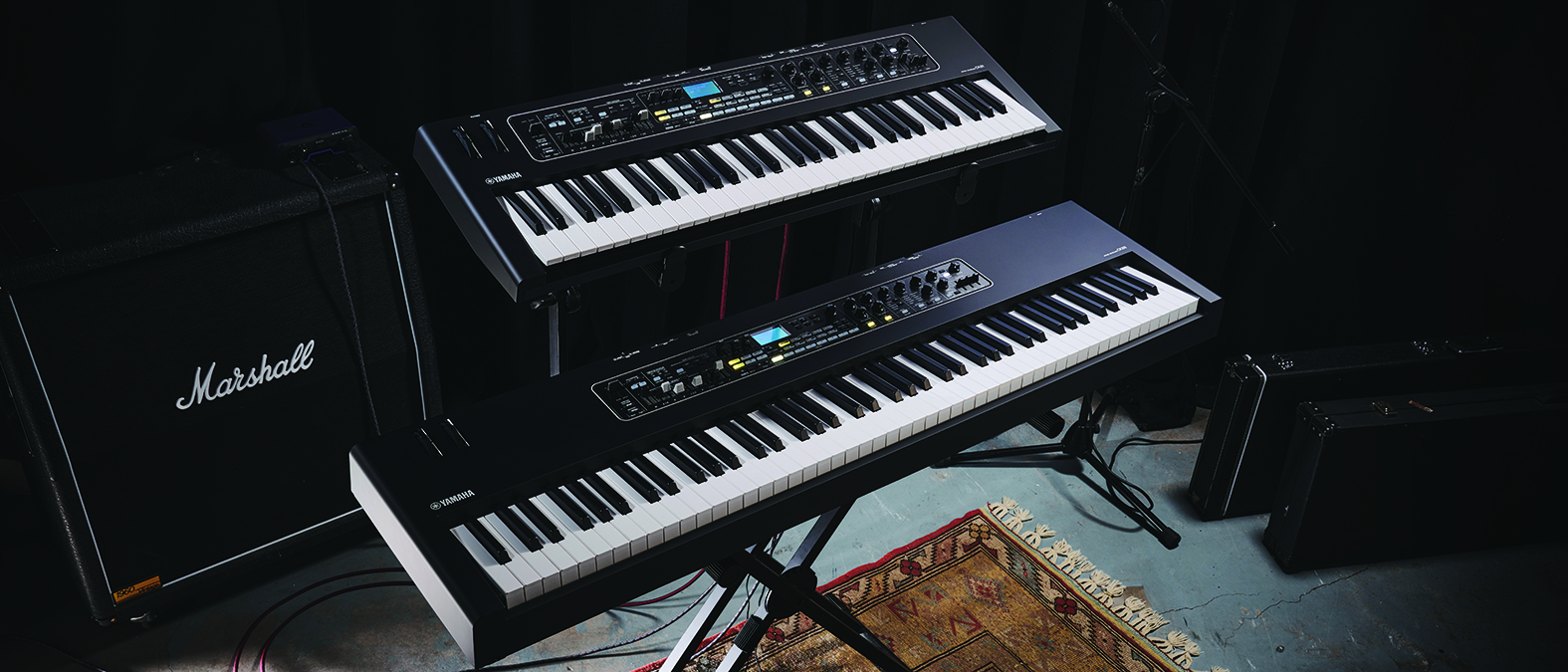MusicRadar Verdict
Hardly revolutionary, but these get so much right and offer such a high level of convenience, who wouldn’t enjoy owning one?
Pros
- +
Excellent sounds in a compact package.
- +
Battery power and built-in speakers add a great level of convenience.
- +
Good playability, and flexible splitting/layering options.
Cons
- -
Not as robust as some stage pianos.
- -
Bluetooth MIDI would be nice.
- -
Awkwardly placed power button.
MusicRadar's got your back
Yamaha CK Series keyboards: What is it?
After releasing the CP and YC ranges in 2019 and 2021, you’d have thought Yamaha would have had enough of stage pianos for a while, but not a bit of it.
Earlier this year, the company unveiled the CK88 and CK61, two new pianos that inherit sounds from the aforementioned models but also offer something markedly different.
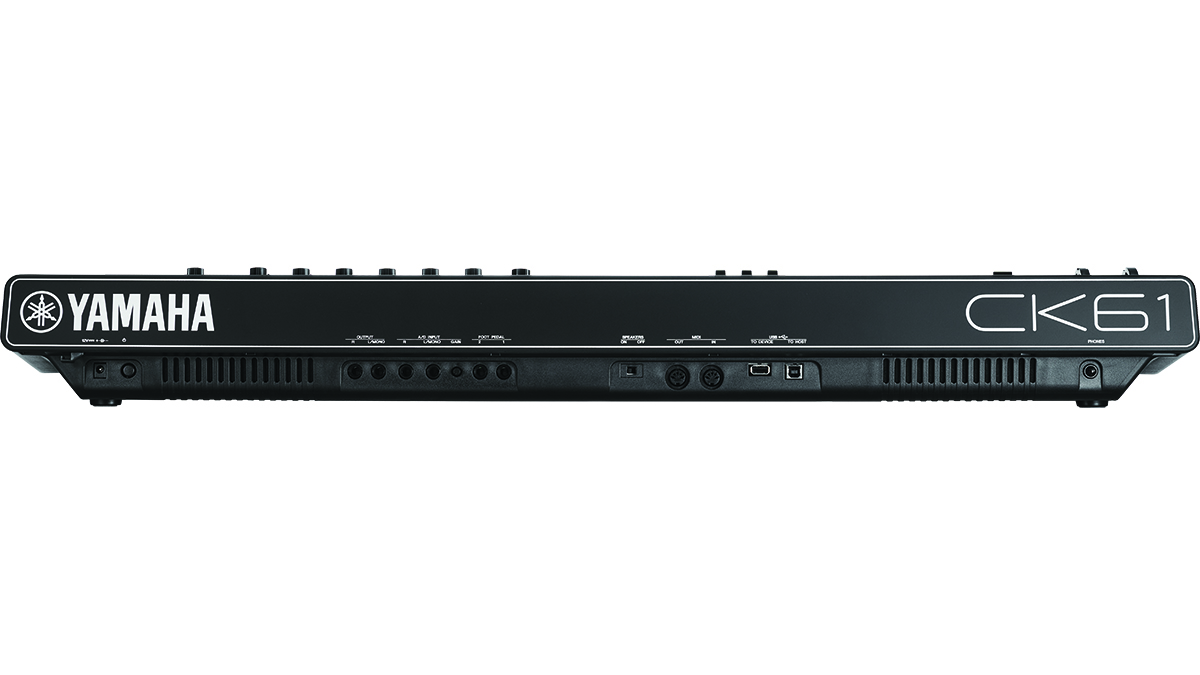
Whereas some stage keyboards are liable to give your roadie a back injury, these are lightweight and portable. The portability doesn’t just extend to how easy these pianos are to move around, either. Both can be powered by eight AA batteries and have built-in speakers, so really can be played anywhere you like.

Yamaha CK Series keyboards: Performance and verdict
There’s really only one difference between the CK61 and CK88: the smaller model has an FSB (Future System Basic) keyboard, and the larger comes with a GHS (Graded Hammer Standard) action. Which means that one feels more like a synth, and the other a piano.
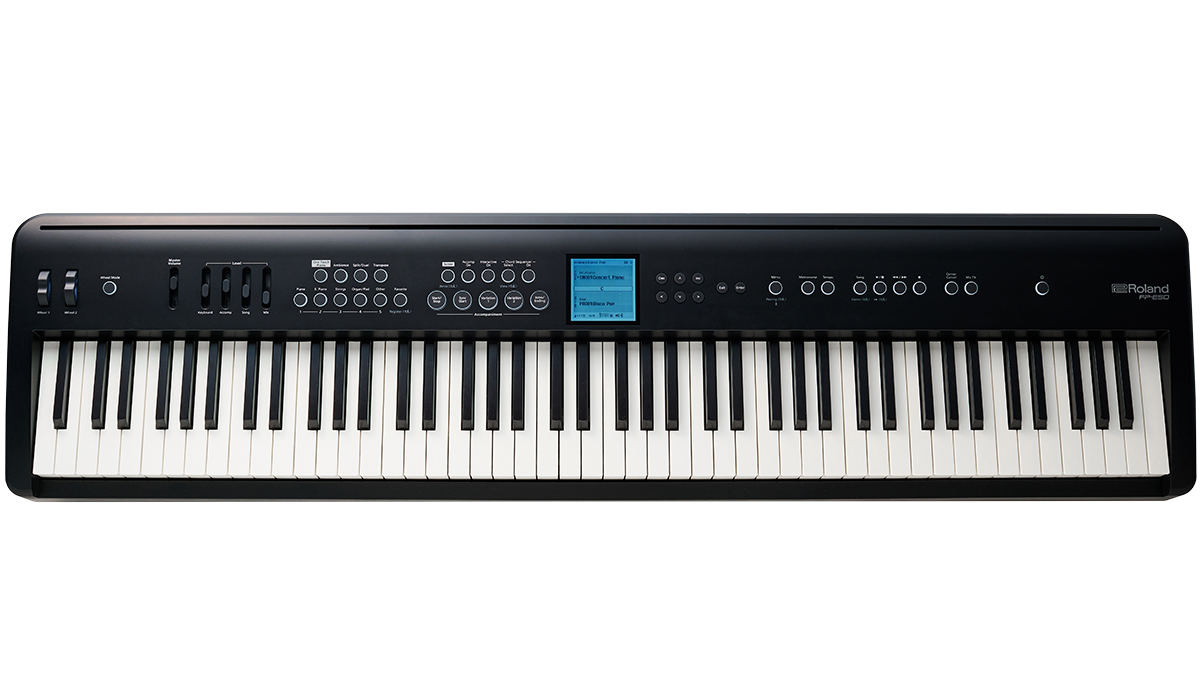
• Roland FP-E50
More of a ‘home’ piano than the CKs, but – thanks to its impressive auto-accompaniment features – one that’s suitable for performance, too. Roland’s SuperNATURAL Piano and ZEN-Core synth engines power a wide selection of excellent sounds.
• Korg Liano
If you can live without all the hands-on control, the Liano is a very affordable portable option. Like the CKs, it can be battery-powered and offers built-in speakers.
• Casio PX-S3100
Definitely a digital piano rather than an all-out stage piano, but this is another one that can be battery-powered, has speakers and comes with a wider variety of sounds than you may expect. 200 accompaniment styles are included.
Sounds are generated primarily by Yamaha’s AWM2 engine, meaning that they’re sample-based, and you get 363 voices. These include not only the obvious – acoustic/electric pianos, organs etc – but also plenty of synths. You can combine up to three of these voices into a Live Set Sound, which also stores split, layer and effect details. There’s space to store 160 Live Set Sounds, with 80 slots initially filled by presets.
The control panel can be divided into three main sections: there’s a dedicated organ area on the left, complete with real drawbars; a central control area; and effects knobs/buttons on the right. You’ll find pitch and mod wheels, too.
Other notable features include Bluetooth audio and L/R audio inputs that enable you to plug in another source (a phone, a mic or another instrument, for example) and mix it with the sound of the keyboard. There are two foot pedal inputs, MIDI I/O and two USB ports – one for interfacing with a computer or mobile device and another for accommodating a flash drive. There’s also a headphone output and an input for the power supply that comes included (you don’t have to run on batteries, you’ll be pleased to know).
Want all the hottest music and gear news, reviews, deals, features and more, direct to your inbox? Sign up here.
Physically, the CK88 really is very lightweight. Admittedly, it doesn’t feel as sturdy as some other stage pianos we’ve played, but that was always going to be the case. We like the slightly retro styling, too, which draws on Yamaha’s heritage and it’s good-looking from all angles.

This being a Yamaha keyboard, we were expecting a satisfying and playable action, and it is. It helps to make the fine-sounding CFX grand piano a pleasure to play, and the upright and electric models are also up to snuff. Yamaha’s ’80s-style DX sounds are also prominently placed, all ready for those big power ballads.
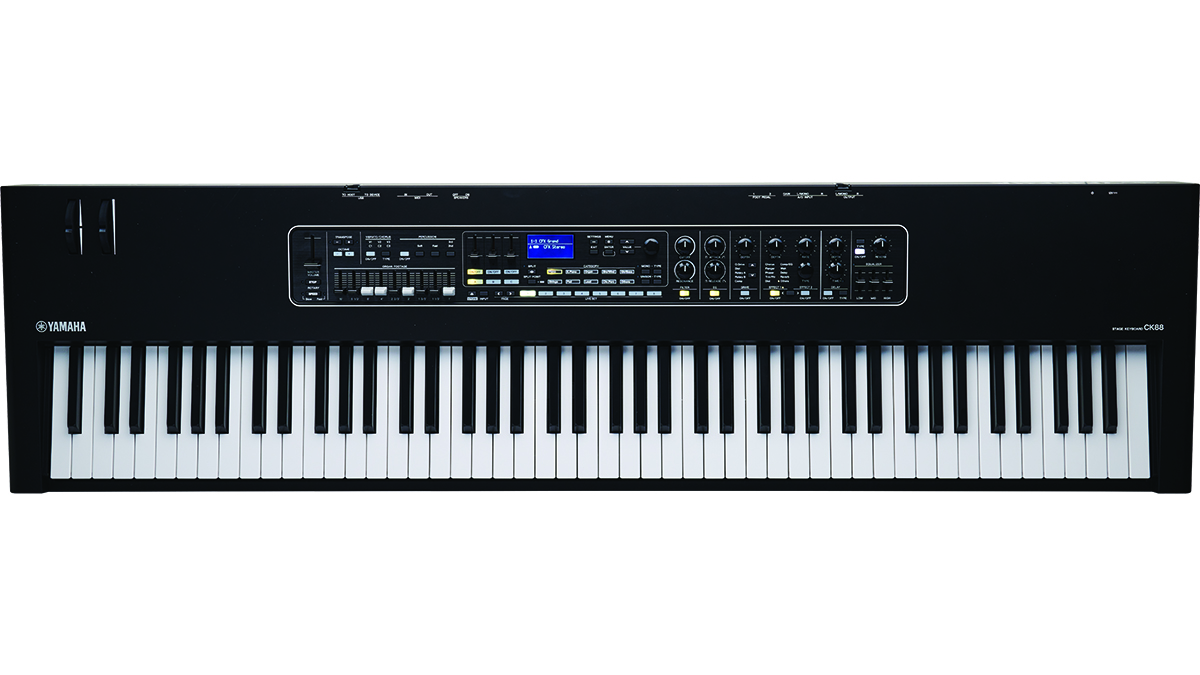
While other sounds might be more ‘by the numbers’, they add greatly to the CK’s overall flexibility, which is further aided by the fact that the keyboard can be split into three areas. For performers – particularly those who want to take one instrument on stage with them – that’s a real plus.There’s very little menu diving.
The organ drawbars feel a little plasticky, but not enough to make us nervous when in the heat of battle, but the labelling in general is clear, and the workflow logical.
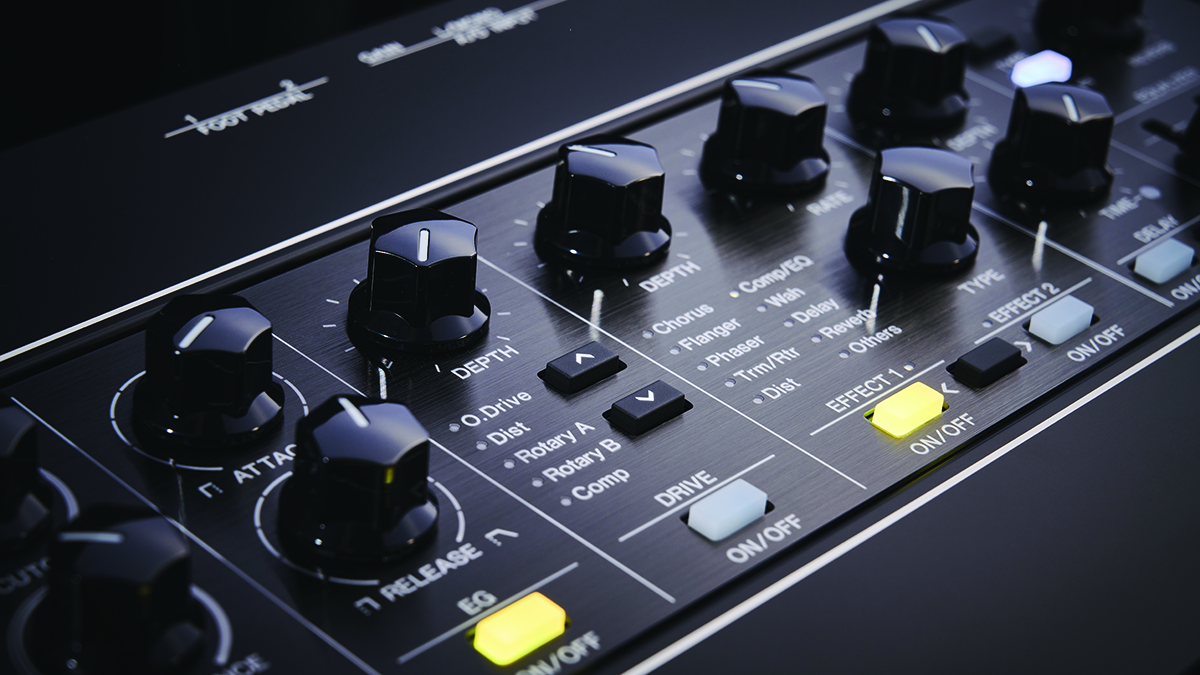
Effectively speaking
Effects are a big deal on the CK, taking up a third of the control panel. Said effects sound good, but you also get the kind of hands-on control performers need.
The effects are divided into sections, starting with a filter with Cutoff and Resonance knobs and an envelope generator with Attack and Release parameters. Next you can choose from five types of drive and adjust the Depth of the processing, and then it’s on to the Effect 1 and 2 slots, which can be filled with a choice of modulation and other effects.
These processors can all be inserted on a per-part basis; you can select and control various types of delay and reverb, applied to all the sounds in a Live Set. The same goes for the three-band EQ.
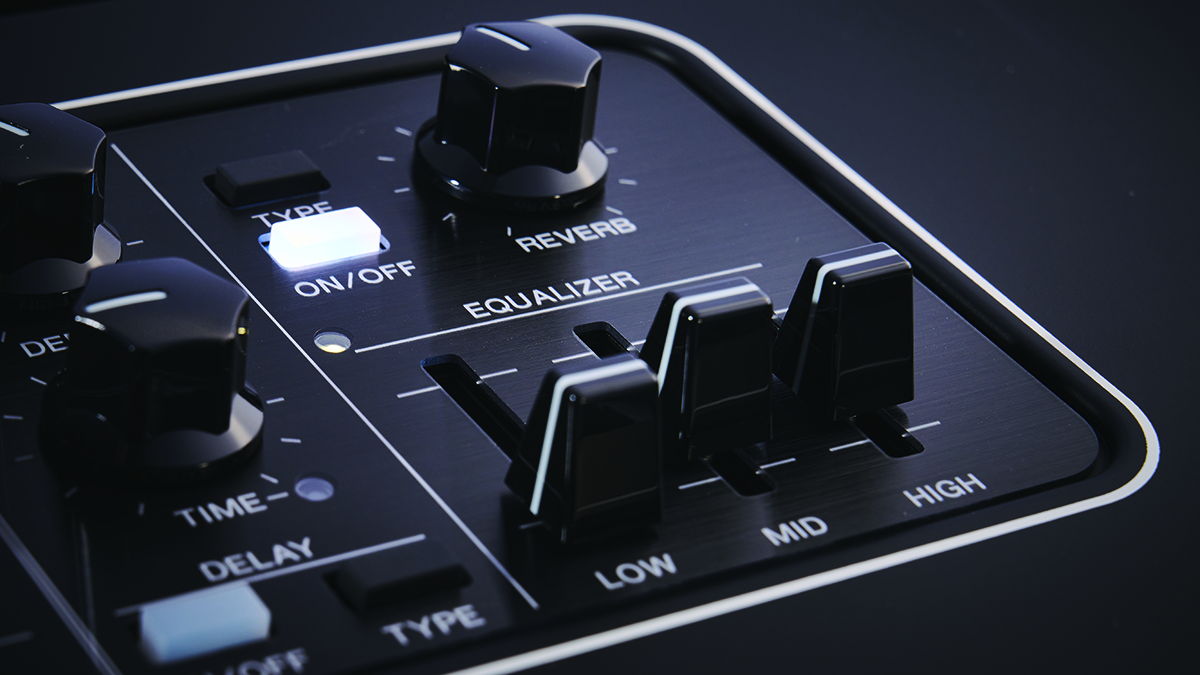
Pump up the volume
Despite being billed as a stage keyboard, we suspect that quite a few CK players will use theirs at home as well. As such, we’re really pleased to see that Yamaha has put those speakers in; they sound clear and aren’t prone to any audible distortion, even with the volume cranked up.
You do need to crank up the volume, though; perhaps because they’re not positioned on the top of the unit, they’re relatively quiet. They certainly do a better job of presenting the CK’s sounds than they do Bluetooth audio, though, which has a slightly muted quality to it.
Speaking of Bluetooth, it’s a shame that there’s no wireless MIDI, a feature that we’ve sort of come to expect these days. And we constantly found ourselves fumbling around for the rear-mounted on/off button, too. We’d rather the headphone socket was a bit more accessible.
But none of this is dealbreaking: the CK is a well-thought-out keyboard that more than deserves its place in Yamaha’s line-up of stage pianos. If you’re a hobbyist keyboard player who only wants one instrument for home or on stage – or perhaps a more seasoned musician who needs an additional board to throw in the back of the car and set up anywhere – it’s hard to think of a better option.
MusicRadar verdict: Hardly revolutionary, but these get so much right and offer such a high level of convenience, who wouldn’t enjoy owning one?
Yamaha CK Series keyboards: The web says
"With three keyboard zones to create complex patches, built-in effects including filters and envelopes, and dedicated organ drawbar controls, these keyboards offer endless possibilities for sound creation."
Keyboard Kraze
Yamaha CK Series keyboards: Hands-on demos
Yamaha Synths Official
Bonners Pianos & Keyboards
Andertons Synths, Keys and Tech
Yamaha CK Series keyboards: Specifications
- KEY FEATURES: 1-note FSB or 88-note GHS keyboard, built-in speakers, battery power (8X AA), 363 AWM 2/AWM voices, 12 notes of polyphony, 160 Live Set Sound slots (80 presets), effects, master EQ, USB audio interface, Bluetooth audio, MIDI I/O.
- CONTACT: Yamaha

I’m the Deputy Editor of MusicRadar, having worked on the site since its launch in 2007. I previously spent eight years working on our sister magazine, Computer Music. I’ve been playing the piano, gigging in bands and failing to finish tracks at home for more than 30 years, 24 of which I’ve also spent writing about music and the ever-changing technology used to make it.
